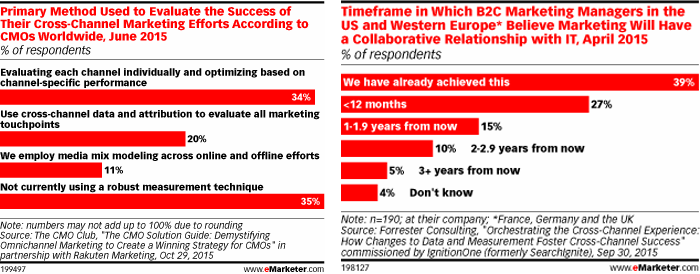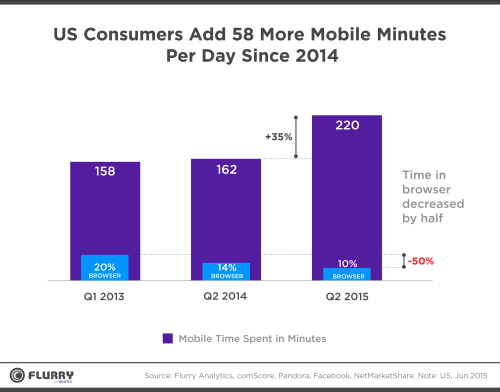
Get your FREE 30-day trial.
Please complete all fields.
There has been a major evolution in how we target ads and last year shows just how prevalent that evolution will be in years to come. I’m talking about the move beyond cookies to using data to personalize advertising for each individual person, no matter what device or app they use.
There is a huge desire for this customer-centric approach to digital advertising among marketers, but it’s not an easy task. As of June 2015, only 20% of CMOs worldwide evaluated the success of their cross-channel marketing efforts using data and attribution across all marketing touchpoints according to survey data shared by eMarketer. CMOs are already working with CIOs to find the right solutions to manage the recent explosion of data. However, eMarketer shows that 61% of marketers still need to build collaborative relationships with IT departments.

It is understandably difficult to securely manage vasts amount of data from various touchpoints, seamlessly analyze the data based on your business objectives, and turn those insights into personalized customer journeys. However, technology is improving and major ad platforms are building solutions to help.
Prior to 2015, Facebook and Twitter gave marketers the ability to target known customers on their respective platforms through Facebook’s Custom Audiences and Twitter’s Tailored Audiences, but in 2015 Google followed suit. In September Google announced a new solution called Customer Match, that allows advertisers to target customers based on email addresses. Given Google is the largest advertising platforms on the planet with nearly $16.8 billion dollars in ad revenue in Q3, this has huge implications for 2016; imagine the possibilities that open up when you target target ads people to Gmail users and logged in Google Search users! At Salesforce we had our own exciting advertising announcements in this area last year by bringing complete CRM targeting to digital advertising channels.
This past year consumers continued to spend more and more time in mobile apps, and U.S. consumers added 58 more mobile minutes per day. Solutions have emerged to enable you to target your customers in this mobile environment. According to Flurry, 90% of all time spent on mobile in 2015 was in apps.

Cookies do not exist in mobile apps, but there are solutions available that enable you to target your customer in the apps they use on any mobile device. The Facebook Audience Network allows you to use the same targeting features of Facebook ads to reach users in the abundance of available apps with banner, interstitial, and native ads. This works by using the device ID or advertising ID of a consumer’s device that has the third-party app installed if that consumer is logged in to Facebook on the same device. Let’s take a look at a top brand that has seen success in cross-channel execution.
There are many approaches to cross-channel advertising and our example today incorporates search, social, and apps. In 2015, GE launched a combined Facebook advertising and search co-op marketing campaign with 40 retailers invited to participate. The campaign “reached 40 million local consumers on Facebook while garnering 1.7 million geo-targeted impressions on mobile apps such as TuneIn Radio, MeetMe, MLB, TextNow, WeatherBug, Accuweather and ABC News” (Adweek). This campaign allowed GE to diversify the placements of its ads and extend the reach of the campaign to users whether they were checking their Facebook, searching for products, or using their favorite app.